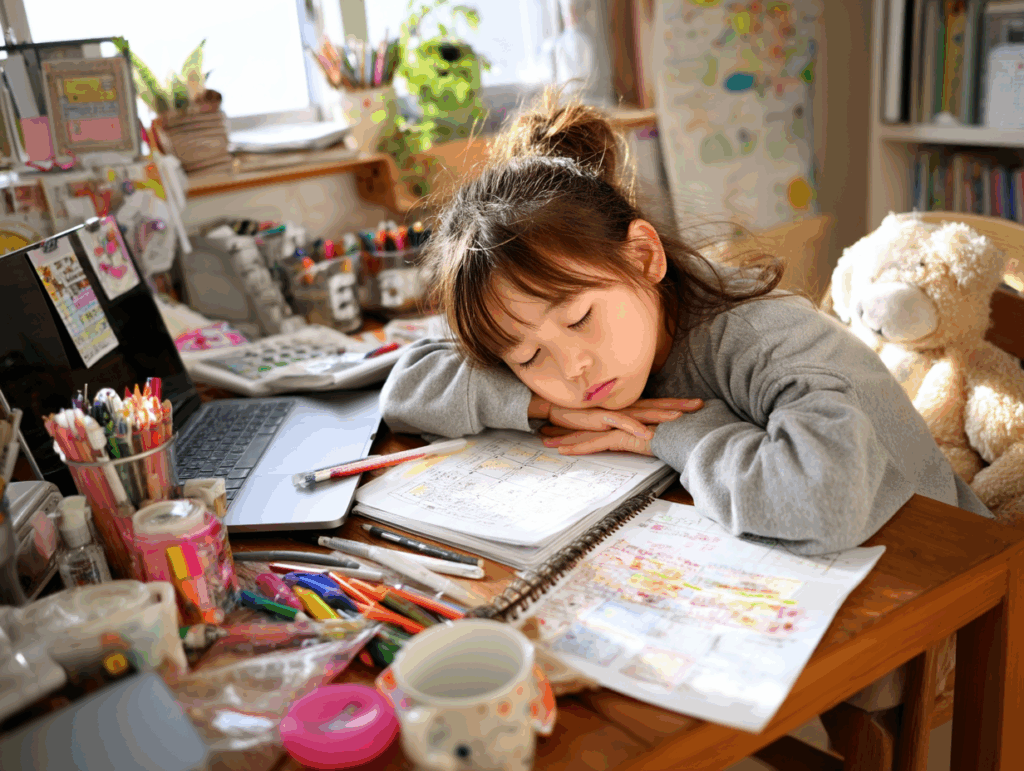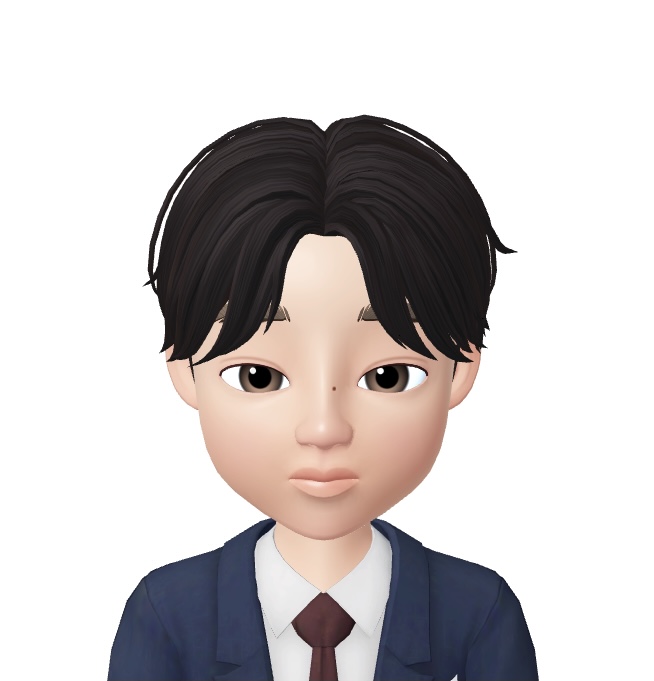【WPMの測定手順】
1. 読む前に設問を確認する
2. 時計(ストップウォッチ)を見ながら、英文を最初から最後まで読み、かかった秒数を記録する
3. 設問に解答する
4. 答え合わせをして正解数を確認する
以下の計算式でWPMを算出する
WPM = 語数 ÷ 読むのにかかった秒数 × 60 × 正解数 ÷ 設問数
※読んだ内容の理解を測定せずただ英文を読むスピードをチェックしたい場合は、WPM = 語数 ÷ 読むのにかかった秒数 × 60 まででOK。
Why Japanese Children Need More Sleep
Many Japanese children are not sleeping enough, and scientists say this hurts both their bodies and their minds. Two recent studies looked at sleep habits from toddlers to high-school students and found clear warning signs.
Professor Hiroki Ueda from the University of Tokyo followed 14,000 pupils. He discovered that almost every child slept less than the time recommended by doctors. Ninety-five percent of sixth-graders got fewer than nine hours a night, and twenty-seven percent of final-year high-school students slept under six hours. On weekends many pupils try to “catch up,” but this creates social jetlag, a gap between school nights and free days. When the gap is longer than two hours, later health problems become more likely.
Another research team compared sleep in different countries and saw that Japanese toddlers rest the least. Teenagers who sleep under five and a half hours are more likely to feel depressed or anxious.
Professor Take Takigawa at Juntendo University warns that a tired brain can look like one with ADHD. Children who cannot focus in class might simply need more rest, not medical drugs. Early checks and support can prevent wrong labels and help families act quickly.
Experts suggest regular bedtimes, darker bedrooms, and limits on phones at night. Experts also stress daily morning sunlight. Schools could start later, and parents might read bedtime stories instead of checking messages. Giving children enough good-quality sleep is an easy, powerful investment in their future health and learning. (250 words)
☆Answer the questions☆ (2×4=8)
(1) According to the text, what percentage of sixth-graders sleep fewer than nine hours?
a) 27 % b) 50 % c) 95 % d) 100 %
(2) What does the term “social jetlag” describe?
a) Flying overseas for school trips
b) A gap between sleep on school nights and free days
c) Staying awake during class
d) ADHD symptoms
(3) Which problem may be mistaken for ADHD, according to Professor Takigawa?
a) Too much morning sunlight
b) Using smartphones at night
c) A tired brain from lack of sleep
d) Eating late-night snacks
(4) Which solution is NOT mentioned by the experts in the article?
a) Regular bedtimes b) Darker bedrooms c) Extra morning sunlight d) Drinking coffee

【Answer】







